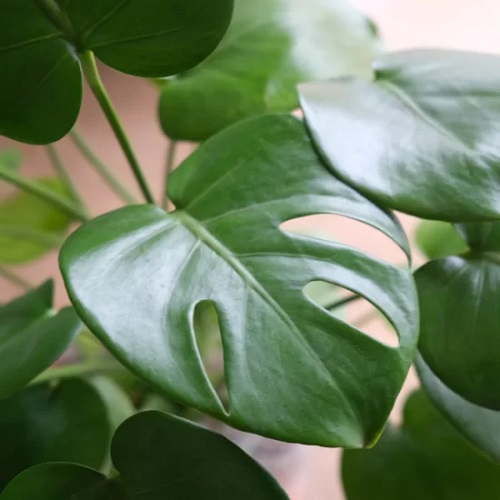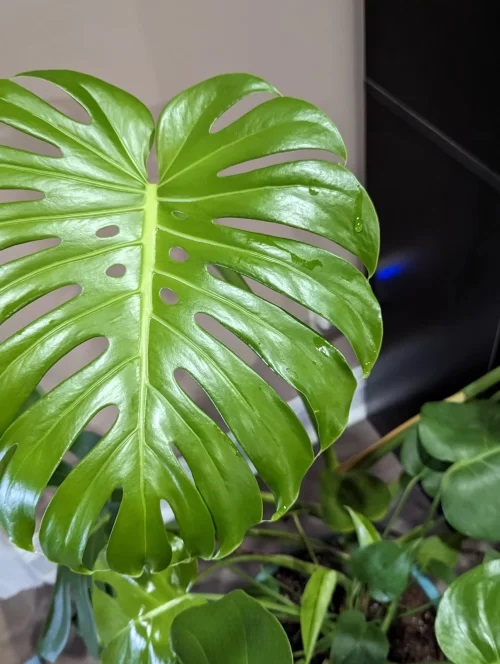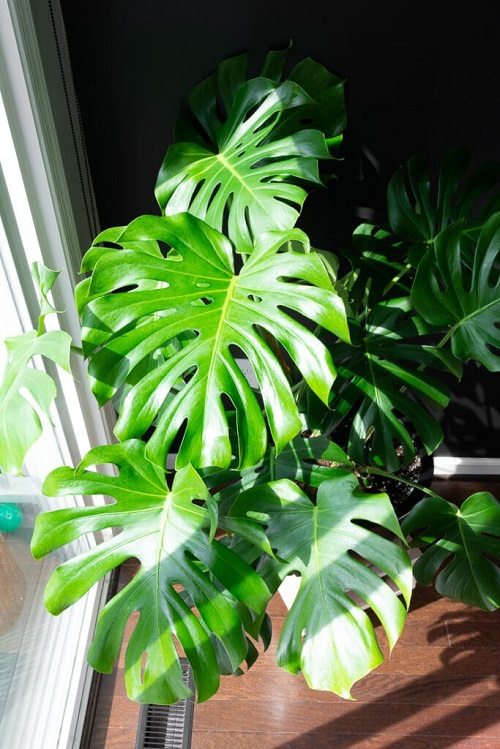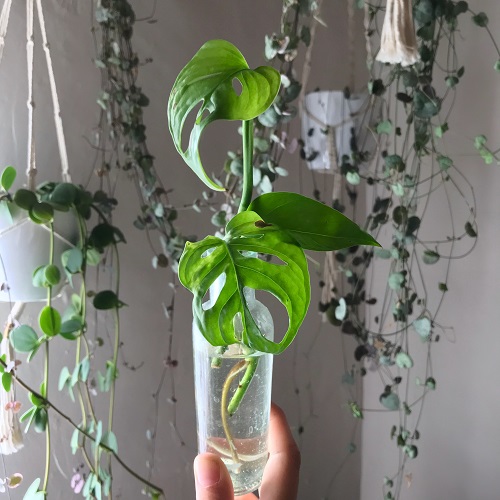Why Do Monstera Leaves Split? Is there a science behind it, or is it just a phenomenon? We’ll delve into the details to find the truth!
Have you ever wondered why the striking leaves of Monsteras develop their characteristic holes and splits? The answer is a fascinating insight into the plant’s natural adaptation and a key to understanding how you can nurture your Monstera to achieve its most impressive foliage. Let’s understand the science behind Why Do Monstera Leaves Split?
Here’s all you need to know about making Monstera’s leaves split
Why Do Monstera Leaves Split?
1. Strategy to Survive in Low Light
The holes and splits in Monstera leaves allow light to pass through the lower leaves. In their natural habitat, Monsteras grow under dense forest canopies.
These fenestrations enable them to capture more sunlight efficiently, ensuring that even the lower leaves receive adequate light for photosynthesis.
2. They Do This to Shed Rainwater
The fenestrations help water pass through the big large leaves of monstera rather than collecting on them – this means no more clogged water in the leaves, which can be home to various pests and insects – a straight invitation to diseases and problems.
This amazing 🤩 adaptation prevents damage to their leaves from rainfall while reducing the risk of diseases!
14 Unheard Monstera Plant Benefits
3. Their Way to Save Themselves
The distinctive appearance of Monstera leaves may deter herbivores from eating them. The split, perforated leaves might confuse animals and make them less appealing as a food source.
4. This Enhances their Photosynthesis
The fenestrations in Monstera leaves help reduce the surface area exposed to direct sunlight, consequently minimizing water loss. This adaptation is particularly beneficial in their native tropical environments, where maintaining water balance is crucial.
This maximizes the photosynthesis efficiency while minimizing water loss and structural damage in these plants.
Here’s How to Grow Monstera Deliciosa Fruit!
5. Supports the Growth of the Large and Heavy Leaves
As Monsteras grow, their leaves become larger and heavier. The fenestrations help in reducing the overall weight of the leaves, making it easier for the plant to support them.
This aspect is particularly important for the plant’s structural integrity and growth in a rainforest setting, where competition for light and space is intense.
6. Saves the Leaves from Being Torn Apart by Wind
The holes and cuts in the leaves also reduce the plant’s resistance to wind. Strong winds (especially if you live in a high-rise apartment and have kept these plants on the balcony or near a large open window) can damage these plants, thanks to the large surface area of the foliage.
The fenestrations allow air to pass through the leaves easily, reducing the risk of them being torn or the plant being uprooted.
Do Monsteras Like Coffee Grounds? Find Out!
7. Split Leaves Make Them Our Favorite Houseplants 😍
Beyond their practical advantages, Monstera’s split leaves have made them one of our most interesting plants. Leaves of various Monstera varieties are visually appealing, and this drives many houseplant collectors to make this aroid the most sought-after ornamental addition to their indoor spaces.
8. Interesting Propagation Fact
When propagating a monstera plant – take a cutting with a node from a fenestrated leaf, and the chances of a new plant developing its famous split leaves earlier will increase. Also, discover more ways to get split leaves on Monstera here!
How to Prune a Monstera in a Right Way
How Monstera Develops Split Leaves?
Monstera leaves create fenestrations, small holes, or perforations once they grow. As the plant ages, these holes become more prominent, creating the unique fenestrations we see in mature Monstera leaves.
This happens because of a process called Programmed Cell Death (PCD), where the cells in the leaf undergo controlled cell death. What’s intriguing is that PCD occurs simultaneously in all the cells within the perforation site. This suggests that a coordinated signaling process triggers cell death evenly, forming the characteristic fenestrations in leaves.







